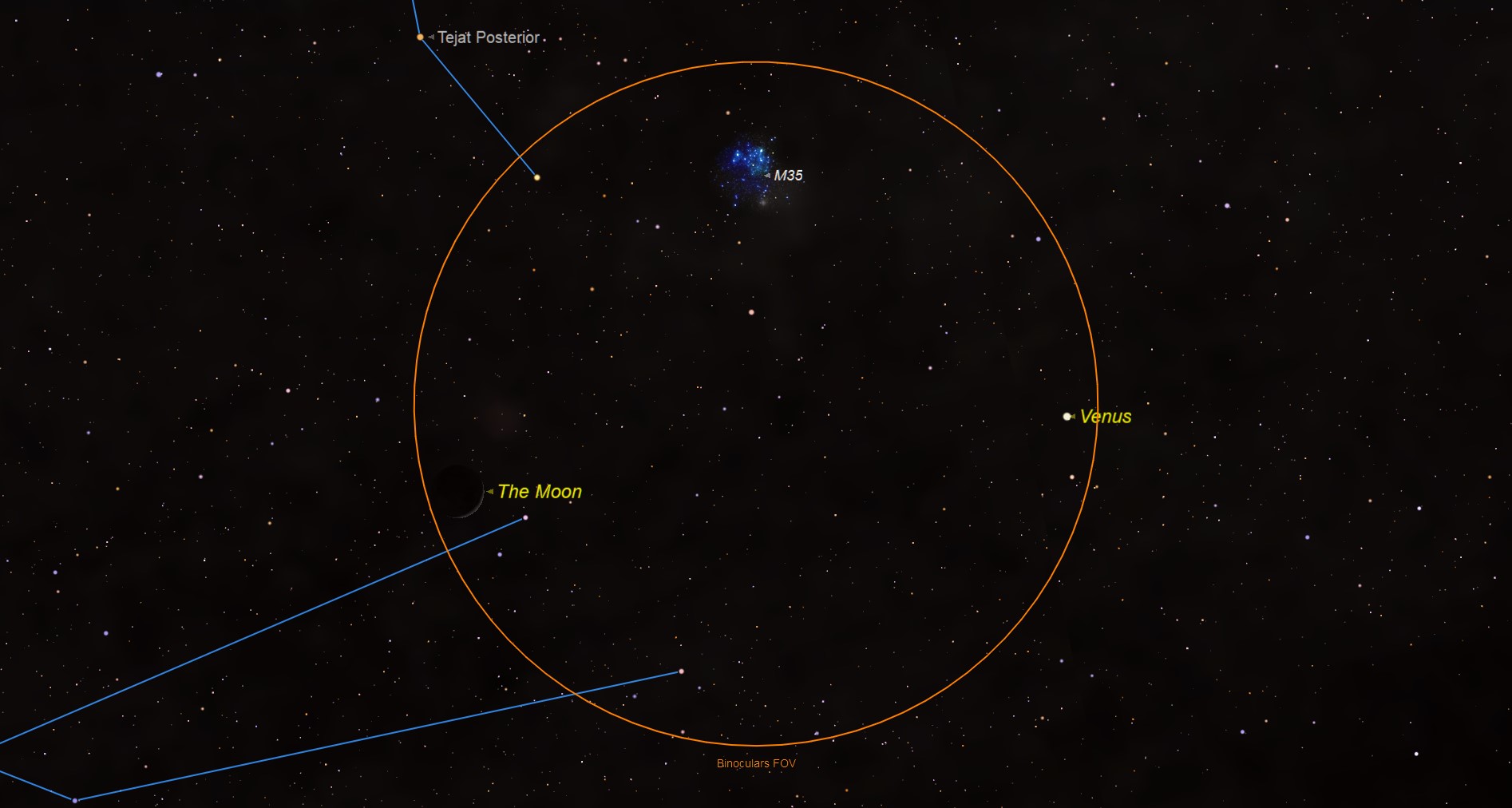How to See the Moon and Venus with 6 Degrees of Separation Tonight!

By now, you almost certainly have noticed dazzling Venus in the west-northwest sky soon after sunset. And tonight (May 17), this brilliant world will have company, sharing its part of the sky with a slender (8.5-percent illuminated) crescent moon, just two and a half days past new phase.
Whenever these two objects pair off, they always attract attention — even when they are not particularly close together. Your clenched fist held at arm's length measures roughly 10 degrees across; tonight, you will find our natural satellite 6 degrees — a little more than half a fist — to the lower left of Venus.
Ever wonder which is brighter, Venus or the crescent moon?
Many people will probably say Venus because it appears as a small, sharp point of light. But in reality, it is the moon that is brighter. Currently, Venus shines at an eye-popping magnitude of -3.9 (lower magnitudes are brighter), but the crescent moon, thin as it is, is magnitude -7.4 — 25 times brighter! It might be difficult to accept this, but the reason is that the moon's light is spread out over a much larger area compared to Venus' light, thus making the moon appear dimmer.
And, of course, seeing the two objects close to each other in the sky is an illusion of perspective; the moon and Venus are nowhere near each other in space. The moon is 226,000 miles (364,000 kilometers) from Earth, while Venus is 126 million miles (203 million km) from our planet. But tonight, they will be lined up to appear relatively close to each other.
During May, Venus' elongation from the sun increases from 24 to 32 degrees, making the planet easy to spot from north temperate latitudes; it will hang in the west-northwest sky at dusk as it nears the peak of its not-very-lofty 2018 apparition. The planet will appear some 10 to 20 degrees to the sun's left and 25 degrees above the horizon. Because a bright sky helps subdue Venus' glare, this is a good time to inspect the planet telescopically, though its gibbous disk will still remain rather small and approximately seven-eighths illuminated.
Venus sets around 10:40 p.m. local daylight time. During the second week of June, when it will be at the pinnacle of its current evening visibility, Venus will set just after 11 p.m.
Breaking space news, the latest updates on rocket launches, skywatching events and more!
Joe Rao serves as an instructor and guest lecturer at New York's Hayden Planetarium. He writes about astronomy for Natural History magazine, the Farmer's Almanac and other publications, and he is also an on-camera meteorologist for Verizon Fios1 News, based in Rye Brook, New York. Follow us @Spacedotcom, Facebook and Google+. Original article on Space.com.

Joe Rao is Space.com's skywatching columnist, as well as a veteran meteorologist and eclipse chaser who also serves as an instructor and guest lecturer at New York's Hayden Planetarium. He writes about astronomy for Natural History magazine, Sky & Telescope and other publications. Joe is an 8-time Emmy-nominated meteorologist who served the Putnam Valley region of New York for over 21 years. You can find him on Twitter and YouTube tracking lunar and solar eclipses, meteor showers and more. To find out Joe's latest project, visit him on Twitter.
